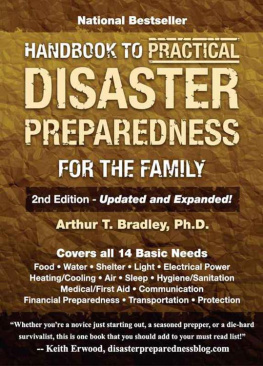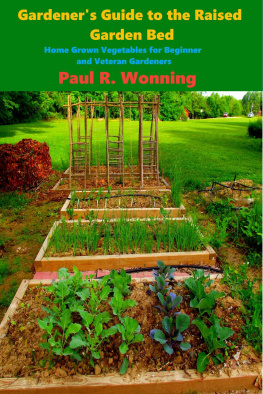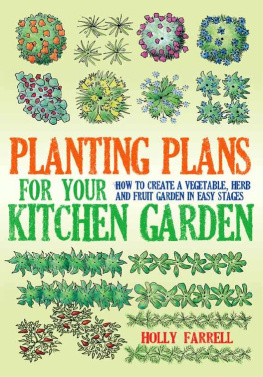Contents
Introduction
The Built-In Benefits of Raised Beds
Most of us have a favorite photo or painting hanging on the wall at home, mounted in a nice frame. Theres something satisfying and pleasing about a framed picture. The frame sets off the image from its surroundings, announcing it as something special.
Creating raised beds for a garden works the same magic. Elevating a garden bed several inches above ground level calls attention to the plants growing there. Whether you frame the bed with wood or bricks, or simply cover up the exposed soil at the sides with grass clippings or wood shavings, the finished result looks great.
The lovely appearance of raised beds can motivate you to take good care of your garden all season long, but thats just one of the benefits of gardening in raised beds. Growing in raised beds offers important growing advantages to the plants and helpful logistic advantages for gardeners, too. Raised beds are:
- Sized right for success
- Perfectly designed for super soil
- Ready to plant right from the start
- Easy to expand
Sized Right for Success
Whats the right size for a vegetable garden? In most cases, smaller than you might think. Its surprising how much food a garden as small as 100 square feet can produce.
Many new gardeners make the mistake of starting too large, because its easy to map out a large ground-level garden plot and till it up. Creating such a garden plot happens fast, but the work needed to plant, tend, and harvest a big garden adds up over the season. If your garden is larger than you can manage, its all too easy to fall behind your planting schedule. Weeds will sprout, and the task of fighting weeds will become a chore. Or you may have too much success, with such a large harvest that you dont have enough time to pick it all, let alone freeze or can the abundance.
Setting up a raised-bed garden takes more planning, time, and effort than starting a ground-level garden, and thats a positive! Youll be more likely to start out small, and starting out at the right scale has benefits that last all season long. You wont fall behind on planting, and youll remain motivated to water and tend to your plants. Youll harvest crops at the perfect time, allowing you to enjoy maximum flavor and freshness. Youll have time to sow cover crops and make compost, which will improve the soil and lead to even better results as years go by.
Perfectly Designed for Super Soil
Becoming a good gardener is as much about learning how to nurture the soil as it is about learning how to tend crops. Loose, fertile, living soil is what vegetable and flowering plants need, and the process of building a raised bed is a wonderful opportunity to create just that kind of soil environment. You may be lucky enough to have high-quality soil, in which case you can work directly with your existing soil to shape raised beds. But if you have problem soil that is low in nutrients, drains poorly, or is full of rocks (there will be more on how to determine your soil type in ), you can garden in raised beds built on top of the native soil. Simply spread a base layer of newspaper or cardboard over the ground surface and build up, using enriched purchased topsoil or compost instead.
Raised-bed gardening protects soil quality over time because you can tend your garden without ever having to step on the soil in the beds. Youll sit, stand, or kneel in permanent pathways between the beds instead. This allows the soil in the beds to retain a loose, open structure with lots of pore space, which allows air and water to penetrate the soil easily. That provides ideal conditions for both the plant roots and the beneficial microorganisms that help supply the nutrients plants need for healthy growth.
Ready to Plant Right from the Start
The temperature of garden soil can vary from freezing in winter to as high as 100F (38C) on a hot summer day. Why does soil temperature matter? It matters because it affects both seed germination and root growth. The ideal soil temperature for germination of many vegetable crops is in the range of 50 to 70F (1020C). Some types of seeds will germinate at lower temperatures, but theyll be more prone to rot or to develop slowly, which can affect yield down the line.
At the start of the gardening season in spring, soil is cold and usually wet. Thats discouraging for gardeners eager to start the season! Sowing seeds may be an exercise in futility, and digging in soil when its wet can lead to problems, too it can ruin soil structure, which is bad both for soil organisms and for plant roots.
The good news: the soil in raised beds tends to be drier and warmer than the soil in ground-level beds. For one thing, water drains easily in the loose, open soil of a raised bed, and drier soil heats up more quickly than wet soil does. And because the bed is raised, spring sunshine has more of a warming effect on it. The bed can absorb heat not only through the top surface but also through the sides. (You can enhance the warming effect by framing a raised bed with stones, which will absorb heat during the day and release it to the soil in the bed at night.) If you garden in the north, you may find a dramatic difference between the soil temperature in your raised beds and the soil temperature in the surrounding soil 10F (5.5C) or more. Add to that the fact that soil in a raised bed is loose and open (because its not compacted by foot traffic), and even in early spring its possible to gently open shallow furrows for seeds and dig planting holes for seedlings without damaging soil structure. And the warmer soil will mean you can keep on gardening later in the fall, too.
You can build a raised bed at any time of year when the soil isnt frozen. Summer and fall are ideal times, because youll be less busy with planting than you are in spring, and you can choose a day when conditions are pleasant for working outdoors. After you build the new bed, you can plant it right away, or you can cover the soil surface with a protective layer of leaves or straw, and it will be ready for you whenever youre ready to plant.
Attention Gardeners in Arid Climates
A word of caution for gardeners in arid climates: raised beds are prone to drying out more quickly than in-ground gardens. Thats not a benefit when water is scarce. Keep that in mind when you design your garden. You may do better to take the opposite approach and design a sunken-bed garden rather than a raised-bed one.
Easy to Expand
As you gain gardening experience , you may decide you need more growing space, especially if you want to start growing more space-hogging crops such as tomatoes or butternut squash, or start a small bed of flowering ornamentals. The beauty of a raised-bed garden is that you can add as many beds as your property allows. You can build an additional bed alongside your existing beds or anyplace in your yard where conditions are favorable for growing. Because raised beds are naturally appealing to the eye, theyre a good choice for a garden even in the front yard.
As you add beds, you may want to experiment with different sizes and shapes. You could plant a shallow raised bed along a fence and train crops up onto the fence. You might want to build a circular or oval bed, or try a double-decker bed. The possibilities with raised beds are wide open!




















